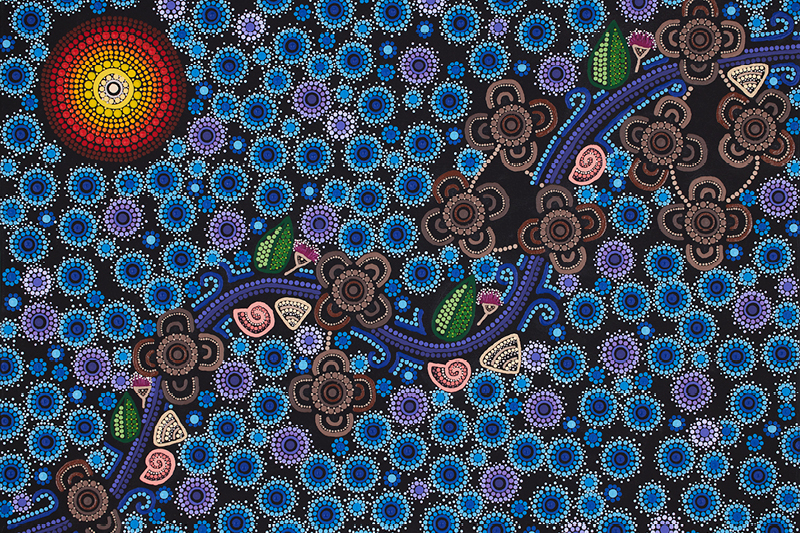The artworks were created by artists Jasmine Bennett and Glen Mackie.
The artworks represent the concept of progress, and are visual representations of the work we’re doing to improve our services to Aboriginal and Torres Strait Islander customers.
Both artists created their artworks using techniques and designs that have been passed down to them by their families.
We’ve begun to apply elements of the artworks on our customer communication, for example during National Reconciliation Week this year. Down the track, you’ll also see staff wearing the designs as part of our corporate wardrobe.
‘I hope that Indigenous people will see this artwork and go “oh, I know what that is, that’s part of me”,’ Jasmine said.
Watch the video below to learn more about Jasmine and Glen, and their commitment to pass on traditional techniques learned from their Elders to future generations.
More about the artists and the artworks
The Torres Strait Islander artwork

Glen Mackie is an Aboriginal and Torres Strait Islander artist living on Yidinji Country, originally from Iama in the Torres Strait and Old Mapoon.
‘I learnt all the stories and designs from my grandmother and grandfather,’ Glen said, ‘they taught me that the designs are not mine to keep, they belong to my people, it’s our heritage.’
The artwork features a collection of Torres Strait Islander symbols and patterns.
The herons represent Aboriginal and Torres Strait Islander people and non-Indigenous Australians,’ Glen explained.
‘The wave pattern set below the herons represents voice and speaking to one another. Men and women are represented by the triangles, featured between two sets of E symbols. These symbolise talking and represent teaching one another and teaching the next generation. The weaving pattern symbolises the Torres Strait Islander tradition of sitting on a mat and teaching one another about family and culture.’
As a whole, this artwork illustrates the importance of consultation between Aboriginal and Torres Strait Islander peoples and non-Indigenous Australians as the key to progressing together.
The Aboriginal artwork

Jasmine Bennett is a Kamilaroi and Dunghutti artist living on Gumbaynggirr land. She’s also a Services Australia staff member.
This artwork features symbols inspired by these nations, coming together to tell the story of progress in the agency.
‘My mum always encourages us to explore our Indigenous heritage,’ Jasmine said, ‘when we were young, she was always really involved in sharing our culture.
‘The sun signifies the light shining upon our journey, lighting our way forward. Our progress is represented by the purple timeline flowing through the piece, connecting us from one point to the next.’
In creating her piece, Jasmine consulted with Gumbaynggirr Elder, Uncle Tony, to seek permission to use the meeting place symbol. The symbol is used at Arrawarra, a special meeting place for Aboriginal people around Coffs Harbour. This symbol is also in part inspired by nations of the Central Desert region.
‘The meeting places represent people coming together,’ she said, ‘as the purple storyline flows, the meeting places become larger, showing the growth of connection to community and each other.’
To complement this, there are 2 types of seashells featured in the artwork: the pipi and the turnip shell.
‘The seashells symbolise the bush tucker that is often shared during meetings, as well as our connection to and reliance on the sea,’ Jasmine explained.
Gum leaves and gum flowers are placed opposite the seashells.
‘These remind us of our ongoing connection to land that’s always with us throughout our lives,’ she said, ’together, the leaves and seashells represent our connection with the lands we live and work on around Australia.’
Small blue curls stretch out from these symbols as a reminder of the connection we all share with freshwater and seawater.
‘These connect to the concentric circles, representing all Australians, as well as community and our ancestors, who watch over us and continue to be a part of our life and journey,’ she said.
Overall, the artwork represents how Services Australia reaches every community across Australia, and how we all work together to support our customers to progress with their lives.